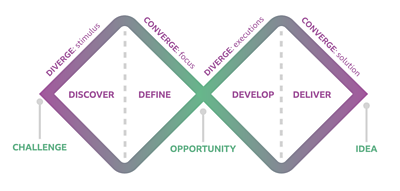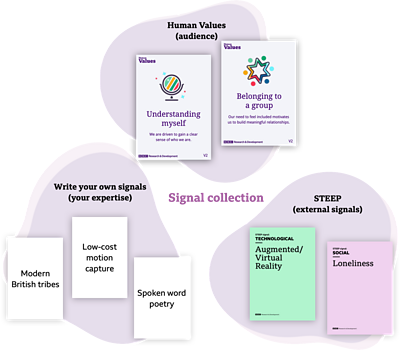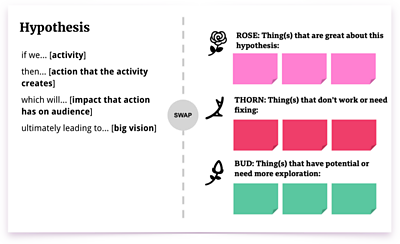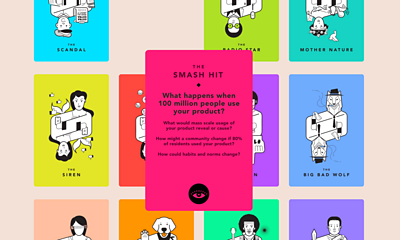UNBOXED: Creativity in the UK launched in March with a programme of 10 major new creative projects, and includes hundreds of events, experiences and activities, taking place across England, Northern Ireland, Scotland, and Wales live and online from March to October 2022. The projects have been created by some of the brightest minds in science, technology, engineering, arts and maths, ranging from immersive light installations to community harvests, journeys through space and time and journeys to a North Sea offshore platform.

Every project has been developed specifically for UNBOXED through an open and collaborative process that brought together over 400 experts across the UK: from scientists to musicians, designers to technologists, engineers to writers, architects to astrophysicists. This community was tasked with developing a wide range of potential projects through a rapid, remote R&D phase from which the 10 final ideas were commissioned and further developed.
This is where ΒιΆΉΤΌΕΔ R&D came in - giving the wider group a series of practice based workshops and talks to support the idea generation process. We were able to draw on everything we have learnt from running Connected Studio and multiple other innovation programmes over the years, bringing together technical and creative minds to push the boundaries of possibility. We gave talks on talks on ΒιΆΉΤΌΕΔ R&D developed Human Values, communities of practice, and interdisciplinary collaboration. We also ran 4 workshop sessions running through each stage of our ideation process, using practical tools and techniques to help the teams communicate and collaborate most effectively.
As UNBOXED is all about openness and optimism, so in that spirit we thought weβd share the material from these four sessions for wider use.
Where are we?
Thereβs no magic wand we wave in R&D to come up with ideas, and a lot of methods we use are tried and tested techniques from the worlds of future-casting, product design and even marketing. The important thing is to understand where you are in the innovation journey, and to make sure the activities and outcomes are the right ones to progress you to the next stage.
We often use the Design Councilβs Double Diamond map to visualise where we are now, and where we need to be. Are we at the start of our journey, where developing as divergent ideas as possible should be facilitated? Or are we far enough along to be using tools that help us converge ideas into a single brief or feature set?
The workshops we delivered to UNBOXED creative R&D programme gave the participants a taster of some of the activities that can be helpful at each of the four stages of the double diamond.

The double diamond, .
Workshop 1: Kick-starting your idea
DISCOVER: Mapping signals to identify opportunities , which includes templates for you to use
Our first workshop was aimed at helping our participants with the discover phase of their idea generation. We helped them identify signals they should be paying attention to, like (Societal, Technological, Environmental, Economic, Political) signals commonly used in scenario planning, and the ΒιΆΉΤΌΕΔ R&D developed Human Values.

Example collection of signals.
To help turn this collection of signals into a useable output, we encouraged participants to identify and write up a series of βhow might weβ¦β opportunity statements using a modification of the excellent βzine template by Melissa ι Teng. The zine format meant teams could compile their signals in a creative, collaborative and accessible way.

How might weβ¦β statement written up as a zine
Workshop 2: Focusing your idea
DEFINE: Refining hypotheses and identifying the best bits of collections of idea, which includes templates for you to use.
Now that our participants had some interesting opportunity spaces to explore, it was time to help them figure out what the best (and worst) bits of these ideas.
First up we need to flesh out the idea a bit more, and give it some purpose. Writing a hypotheses statement is a great way to describe an idea in a way that is purposeful but also testable.

Hypothesis and rose, bud, thorn worksheets
Rose, Thorn, Bud is a technique we often find ourselves using. We use it as a structure for assessing an idea, with roses being the stuff we love, thorns issues or challenges with the idea, and buds new areas to focus on or grow. This is particularly useful for feeding back on someone elseβs idea, without worrying about how to deliver any criticisms of it.
As participants were working in teams, we then game them the opportunity to collate all of the best bits of their ideas. We obviously donβt want to combine them to create a franken-idea, but seeing these elements together will often spark new creative avenues to explore.
Workshop 3: Evolving your idea
DEVELOP: Applying new perspectives to mutate and stretch ideas
, which includes templates for you to use.
At this stage of the creative R&D process, most of our participants had a general notion of what their idea would be, but itβs important in this phase of ideation to really diverge again explore the variety of expressions and forms that the idea might take.
One of the most effective ways of giving an idea new life is to look at it through the lens of a different brand, user or scenario, mutating the concept into something that might be completely different.

βWhat ifββ¦ LEGO made it? β¦It took place at night? β¦It was for people new to the UK?
We provided participants with a set of pre-populated βmutationβ cards and ran through an exercise where they swapped their mutated ideas with each other, stretching the core concept each time. Then participants got together to discuss the highlights of the franken-ideas they generated.
Itβs important to say that it the ideas generated here will rarely be THE idea that gets used. The purpose is to generate enough material that some interesting an hopefully unexpected executions of the idea stand out.

Worksheet showing mutations applied to an idea, which is then swapped with another participant who adds a new mutation.
Workshop 4: Strengthening ideas
DELIVER: Spotting flaws in the idea, and embedded ethical practices and equitable thinking
, which includes templates for you to use.
Ok, so now you have a great idea. Youβve stretched it into new and exciting places. You might even have the beginnings of a plan of how to deliver it. But what might you have missed? Could you have inadvertently excluded a certain community of users? Could you have created something that might be so successful it causes addictive behaviour?
As the final exercise we encouraged participants to break each othersβ ideasβ¦ and then importantly think of ways to fix them!
The agency have an excellent, playful tool called , which help you spot any unintended ethical consequences of an idea. Itβs a lot easier to fix an idea if you identify these consequences up-front, rather than applying sticky plasters when the damage is done.

We put together slides with specific cards to prompt discussions that might help the teams anticipate ethical or public perception issues with their project when it gets scaled up. The aim is to consider their projects from different perspectives, preemptively identify issues, and also suggesting mitigations and fixes for them.
We hope youβve found this post useful. We had good feedback from the teams about the sessions, and we hope the material can be useful for you too.
